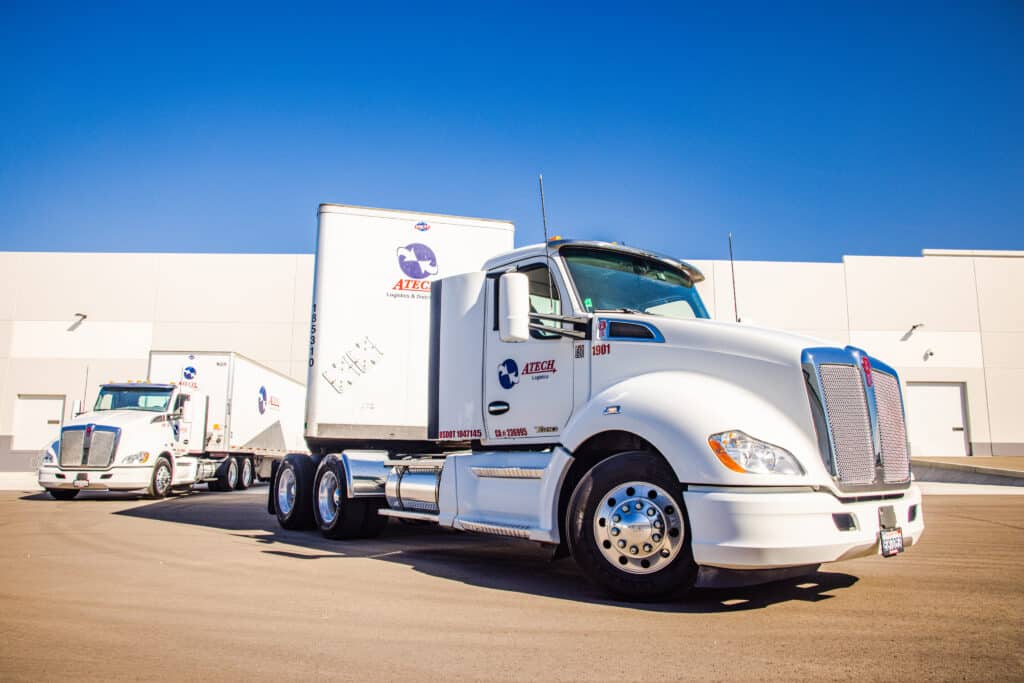
In the logistics industry, truck drivers play a pivotal role in transporting goods from one place to another, across the country and beyond. Going through highways, remote rural roads, and anything in between, truck drivers ensure that essential supplies and goods reach their destinations efficiently. The job of a truck driver encompasses a wide array of roles and responsibilities, each with its own unique set of skills and challenges. Here are 13 types of truck drivers, their roles, and their impact on the logistics industry and economy.
By the Distance
1.) Long-Haul Truck Drivers
When one thinks of truck drivers, we think of those who spend days on the road driving thousands of miles. Those are the long-haul truck drivers, also known as Over-the-Road drivers (OTR). Their long routes take them across the country, transporting goods from one region to another, crossing state lines, and spending extended periods away from home. To be a long-haul truck driver, it takes a special kind of personality, exceptional driving skills, endurance, and experience driving through all kinds of terrain.
Long-haul drivers must take care of themselves, physically and mentally, to stay healthy considering the job requirements with so much time away from home. One of the benefits of being a long-haul driver is the opportunity to explore, navigate, and get to know new towns and cities.
2.) Local Delivery Drivers
Unlike long-haul drivers, local delivery drivers operate within a specific area, typically within a city or metropolitan region. Also known as last-mile drivers, they transport goods from distribution centers to local businesses, stores, or individual residences. Local delivery drivers may work for courier companies, retail chains, or logistics firms, ensuring timely and efficient delivery of goods to their destinations.
To be a local delivery driver and last-mile driver, it is important to pay attention to detail and be familiar with local roads and neighborhoods. Unlike long-haul drivers, last-mile drivers do not need to be away from home for long periods of time and are usually able to be home
3.) Regional Truck Drivers
Regional truck drivers operate within a specific geographic area or territory, covering distances shorter than long-haul routes but longer than local deliveries. They transport goods between distribution centers, warehouses, and retail locations within a designated region.
Regional drivers get the best of both worlds, being able to stay near home and experiencing the adventure of the open road.
By the Type of Cargo
1.) Specialized Truck Drivers
Specialized truck drivers handle cargo that requires unique handling, equipment, and specialized expertise. From oversized wind turbine blades to luxury cars, these truck drivers handle unique cargo that requires special permits and incredible experience. Specialized truck drivers must handle tricky routes and ensure their valuable cargo reaches its destination safely.
2.) Refrigerated (Reefer) Truck Drivers
Refrigerated truck drivers, also known as reefer drivers, transport temperature-sensitive goods such as perishable foods and pharmaceuticals. These drivers operate refrigerated trailers equipped with cooling systems to maintain specific temperatures throughout the trip. Refrigerated truck drivers must monitor and regulate the temperature settings to ensure the cargo remains fresh and arrives intact. Aside from being responsible for driving the goods to their destination safely, they play a critical role in preserving the quality and safety of perishable items during transit.
3.) Hazmat (Hazardous Materials) Truck Drivers
Hazmat truck drivers transport hazardous materials, such as flammables, corrosive materials, and radioactive substances. This cargo presents unique challenges and risks and requires the driver to have special training and specific certifications. Drivers must adhere to strict protocols and go through specific training to learn about the proper handling, labeling, and packaging of hazardous materials. Drivers must go through training regularly to stay up to date on how to handle emergencies and mitigate potential hazards on the road.
4.) Livestock Haulers
Livestock haulers transport farm animals like cattle, pigs, or chickens safely across the country. These drivers undergo specific training to ensure they follow regulations and safely deliver the livestock to their destination.
5.) Tanker Haulers
Tank haulers transport liquids such as petroleum, chemicals, or food-grade products. They must adhere to strict safety protocols and regulations to prevent spills or accidents.
6.) Dry Van Haulers
Dry van haulers maneuver enclosed trailers filled with pallets or boxes with goods such as electronics, clothing, and food. The dry van is a type of trailer that is fully enclosed and does not have refrigeration or temperature capabilities. For that reason, the goods they transport are non-perishables.
7.) Flatbed Haulers
Flatbed haulers play an important role in transporting goods that do not necessarily fit in a standard enclosed trailer due to their oversized or particular shape, such as construction materials, machinery, equipment, vehicles, and large structures. A flatbed truck driver transports cargo in a flatbed trailer, which has an open platform with no sides or roof, allowing for easy loading and unloading.
In conclusion, the world of truck drivers is made up of a diverse array of roles and responsibilities, each vital to the efficient movement of goods. Whether traversing the country on long-haul journeys, navigating local streets for last-mile deliveries, or transporting specialized cargo across all terrains, truck drivers play an indispensable role in the supply chain, logistics industry, and economy. Each driver has a special set of characteristics and aptitudes that ensure that the specific cargoes safely reach their destination.

